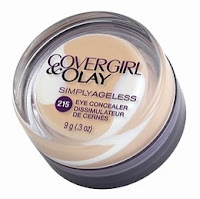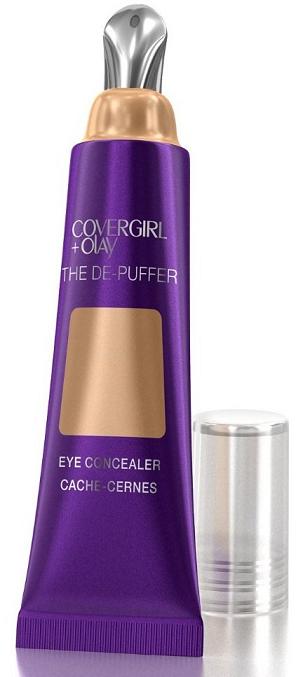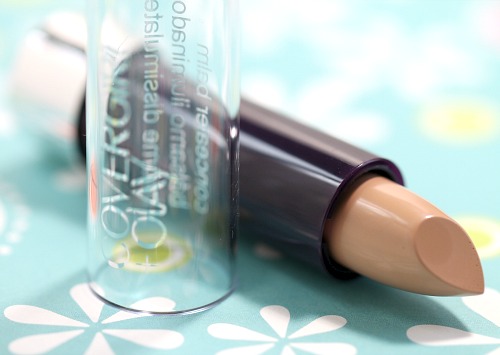
I like both but prefer the CG Smoothers because I have very dry skin. Same amount of product, same price range, nearly identical packaging and similar formulas. If I were to use these concealers to spot conceal, the shade mismatch would be way too dark and obvious.Īll in all, they’re very similar concealers. Again, I’m talking about just the undereye area. I don’t know why that is or if that’s the case for others, but in my experience undereye concealers that are a shade darker (especially ones that are pinker) than the rest of my face work well at neutralizing and concealing dark circles. Going lighter, even with color corrector underneath, only makes my dark circles look ashy. The shades I picked may seem a smidge dark for me but personally I’ve found that going darker rather than lighter in the undereye area conceals dark circles better. Note: I don’t use these concealers to spot conceal I use them solely in the undereye area.

Yellow-based concealers tend to look ashier on my dark circles. Personally, I prefer a pinker concealer because I feel that works better at concealing, correcting, and brightening.

It’s only when I swatched and used the Concealer Balm that the differences in formula became more obvious.Īs you can see from the swatches, the CG Smoothers Concealer runs pink whereas the CoverGirl + Olay Concealer Balm is more yellow. Squalane, PPG-2 Myristyl Ether Propionate, Ethylhexyl Hydroxystearate, Triisocetyl Citrate, Methyl Methacrylate Crosspolymer, Rolatum, Phenyl Trimethicone, Euphorbia Cerifera (Candelilla) Wax/Cire De Candelilla, Ozokerite, Mica, Copernicia Cerifera (Carnauba), Wax/Cire De Carnauba, Maltodextrin, Camellia Sinensis Leaf Extract, Ascorbyl Palmitate, Tocopheryl Acetate, Panax Ginseng Root, Extract, C10-18 Triglycerides, Chamomilla Recutita (Matricaria) Flower Extract, Nylon-12, Propylparaben, Talc, Titanium Dioxide, Iron OxidesĬoverGirl + Olay Concealer Balm (left), CoverGirl CG Smoothers Concealer (right) Squalane, PPG 2 Myristyl Ether Propionate, Ethylhexyl Hydroxystearate, Triisocetyl Citrate, Trimethicone, Euphorbia Cerifera (Candelilla Cera) Wax (Candelilla), Ozokerite, Chamomilla Recutita (Matricaria) Flower Extract (Matricaria), Tocopheryl Acetate, Ascorbyl Palmitate (Vitamin C), Ginseng (Panax Ginseng) Root Extract, C10 18 Triglycerides, Propylparaben, Copernicia Cerifera (Carnauba) Wax (Carnauba), Titanium Dioxide, Iron Oxides, May Contain (+/-): MicaĬoverGirl + Olay Concealer Balm Ingredients:
OLAY COVERGIRL CONCEALER SKIN
To help you pick an invisible SPF that's right for you, we've tested the best sunscreens for darker skin tones, including a tinted CC cream with SPF 50, a budget-friendly sunscreen-moisturizer hybrid (hello, CeraVe!), a pretty lip balm with SPF protection, and a sunscreen made for and by women of color.CG Smoothers Concealer (left), CoverGirl + Olay Concealer Balm (right)Īt first glance the two products and even the ingredients lists look quite similar. While many of the benzene-contaminated products have been pulled from shelves out of an abundance of caution, you may also want to check the batch numbers (usually a 7-figure number located on the bottom of spray cans) of any sunscreens and after-sun products that you own against this list of contaminated products. Now, if you're diligent about applying sunscreen daily, you might have heard about the recent recall of some common sunscreens (including five from Neutrogena and Aveeno) after independent testing revealed that they contained traces of benzene-a known carcinogen-due to contamination. (As a reminder: You don't need a bottle of SPF 100 broad-spectrum SPF 30 is enough). The good news, though, is that thanks to recent advances with innovative textures (think: clear SPF sticks and serums, tinted creams, and non-greasy gel formulas), more skincare companies are offering sunscreens that won't leave behind any white residue. Now, we know that not all sunscreens are created equal-and, historically, a lot of those options have not been made with melanin in mind, so they end up looking chalky and unflattering. Not to mention, SPF is a critical part of any skincare routine, because “with cumulative sun exposure you can see increased fine lines, decreased elasticity, and hyperpigmentation," says dermatologist Dr.


That means that anyone, no matter their skin tone, can get skin cancer-which, according to a study in the Journal of the American Academy of Dermatology, often results in a worse outcome for Black women because cancer tends to be diagnosed at a later stage. But here's the truth: While melanin does give darker complexions some sun protection, it's not enough to ward off those damaging rays. One of the biggest (and, in our opinion, most pervasive) sunscreen myths? Those with darker skin tones don't need a daily dose of SPF.


 0 kommentar(er)
0 kommentar(er)
